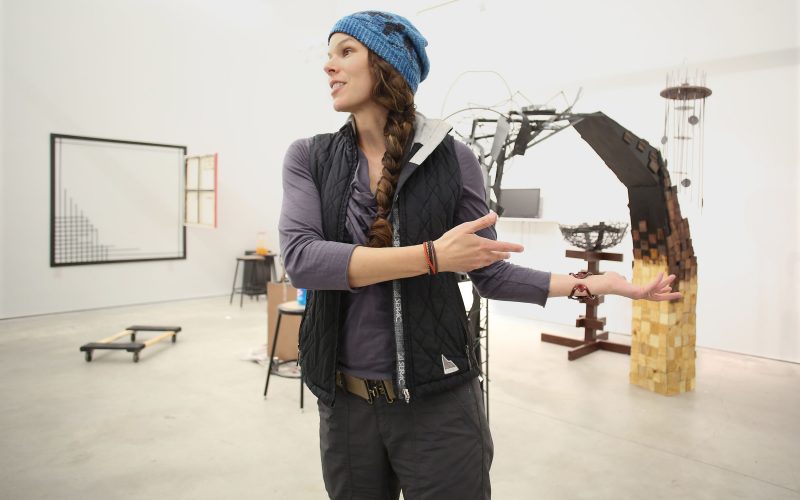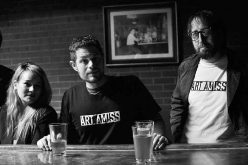Multi-million dollar donation to boost visual arts at UA
Jaime Adame
jadame@nwadg.com
A $40 million gift from the Windgate Charitable Foundation will pay for new arts facilities at the University of Arkansas in Fayetteville.
The largest single grant made by the foundation in its history provides another boost to UA’s art school after the August announcement of a $120 million gift from the Walton Charitable Family Support Foundation.
“I think really decades from now fall of 2017 will be recognized as a watershed moment in the advancement of the arts for this state,” Chancellor Joe Steinmetz said.
The latest gift will allow for development of the Windgate Art and Design District, envisioned as a cluster of arts facilities in south Fayetteville, a few blocks from the main UA campus.
Over the past five years, the Siloam Springs-based Windgate Charitable Foundation has given out about $105 million in support of the arts in Arkansas, said John Brown III, the foundation’s executive director.
Recent in-state gifts include a $20.3 million grant for a new arts building at the University of Arkansas at Little Rock and $15.5 million for an arts building at the University of Arkansas at Fort Smith.
The family foundation also has given out millions more in grants outside the state since its founding in 1993. Brown said the influx in funding provides an opportunity for UA’s School of Art.
“We think the University of Arkansas can become a model for what a great school of art can look like at colleges and universities across the country,” Brown said.

The Free Weekly/DAVID GOTTSCHALK
Cory Perry, a senior Bachelor of Fine Arts student at the University of Arkansas, checks the compatibility of devices in the UA gallery. A $40 million grant from the Windgate Charitable Foundation will allow development of the Windgate Art and Design District a few blocks south of the campus.
Steinmetz said the latest gift’s focus on visual arts facilities complements the earlier support from the Walton Charitable Family Support Foundation, established by the family of Wal-Mart founders Sam and Helen Walton.
About $50 million of the $120 million Walton gift is devoted to student scholarships, with other funds to be used for hiring faculty members and renovating UA’s Fine Arts Building.
“The Walton gift is a programming gift, particularly for art history and for art education,” Steinmetz said.
The latest gift will allow for the visual arts at UA to be concentrated rather than spread out across campus.
“It’d be great to have established in one site the community of art, that’s what really this will be,” Steinmetz said.
He said the central campus lacks space, but the district’s location will help with an effort to involve the public in the arts.
Within the UA community, the gifts will allow greater opportunities for students who are not art majors, Steinmetz said, citing “a shortage of faculty and a shortage of facilities” as limiting factors.
Jeannie Hulen, associate dean of fine arts for UA’s J. William Fulbright College of Art and Sciences, said future goals include enrolling more than 700 art students.
The UA School of Art has approximately 330 students this fall, according to university data. Hulen said the number is already growing, with more than 90 freshman art students this fall compared with fewer than 70 a year earlier.
“The big thing is that we’ll have enough space to do both what we do now and when we grow,” Hulen said.
No decisions have been made about how many buildings might be added, she said.
“But it would definitely be around 100,000 or more square feet” of arts space added near UA’s Sculpture Studio, Hulen said.
A Windgate gift in 2014 of $2 million included about $500,000 used for the sculpture facility, which opened to students in 2016 and cost approximately $9.3 million.
On Wednesday, students in the two-level, approximately 34,000-square-foot sculpture building were wrapping up end-of-the-semester projects or cleaning up metal and wood workshops.
In deciding to attend UA, “the biggest draw for me was the facilities and funding, for sure,” said Lucas Knowles, 29, a master’s student studying ceramics.
Knowles said he considered art schools from across the country and was impressed by UA’s ceramics-making equipment.
“These large, top-of-the-line, high-end kilns mean a graduate student can come in, work more experimentally, work larger, work faster,” he said. He said facilities play “plays “a big factor, I think, for pulling in graduate students.”
The Windgate Arts and Design District sits on land owned by the university, though some of the land includes non-arts facilities like a library storage building that is under construction. Since 2004, UA has purchased about 4.9 acres in the area, paying a total of $1.95 million, according to an email from Mike Johnson, UA’s associate vice chancellor for facilities.
Johnson said additional land purchases are possible.
JoAnn Kaminsky, founder of The Art Experience, said she and her husband, Hank, have been talking with UA about possibly selling the land where the non–profit is housed.
Kaminsky, an artist herself, said she’s been at the site with an art school first and then the current art therapy program for more than 25 years. But if a sale happens she expects the art therapy non–profit to continue its operations, she said.
A growing arts district “will do some more things that can bring arts to the community,” Kaminsky said. With the growth of the UA School of Art, “we, as artists, are very, very thrilled about that,” she said.






